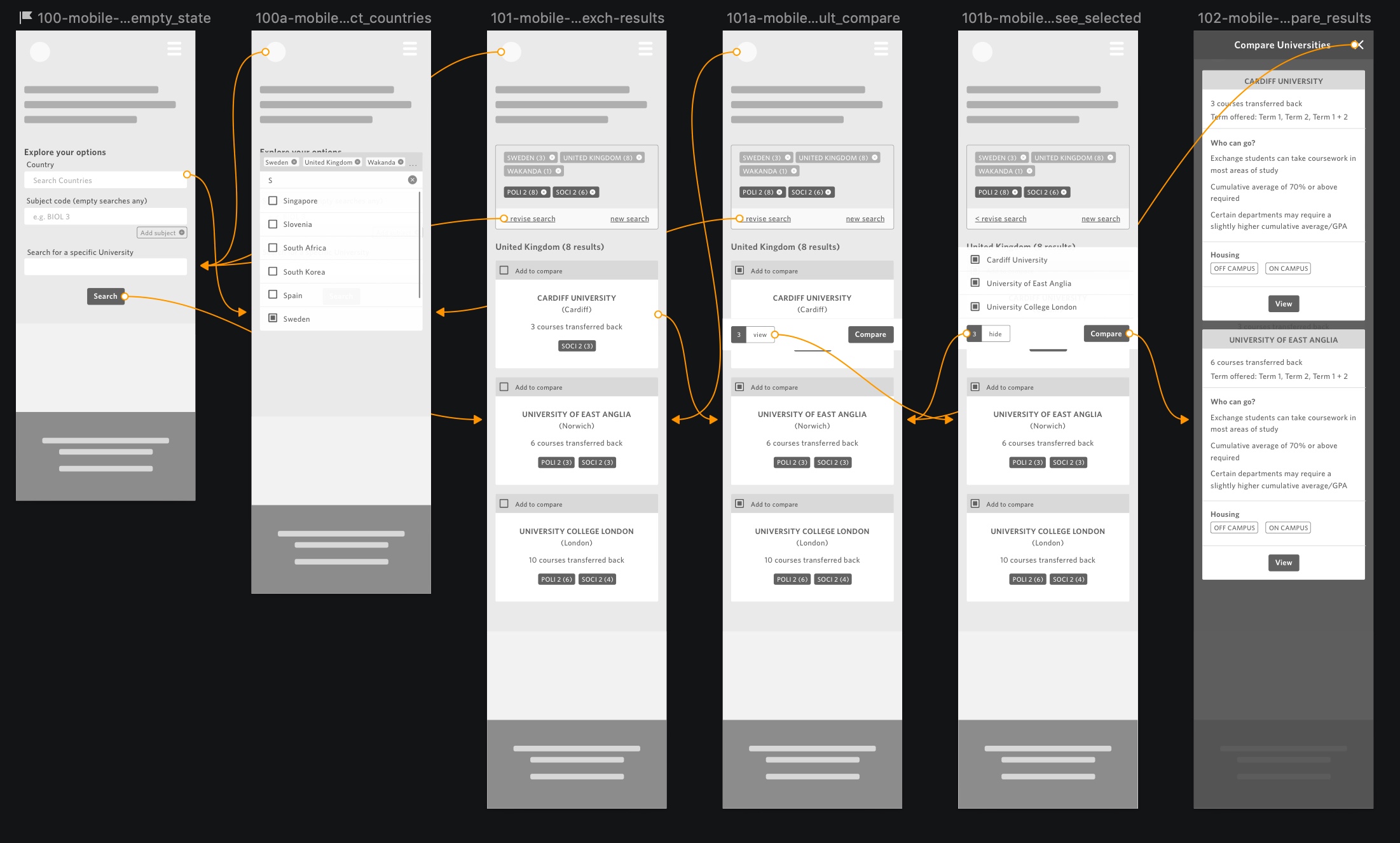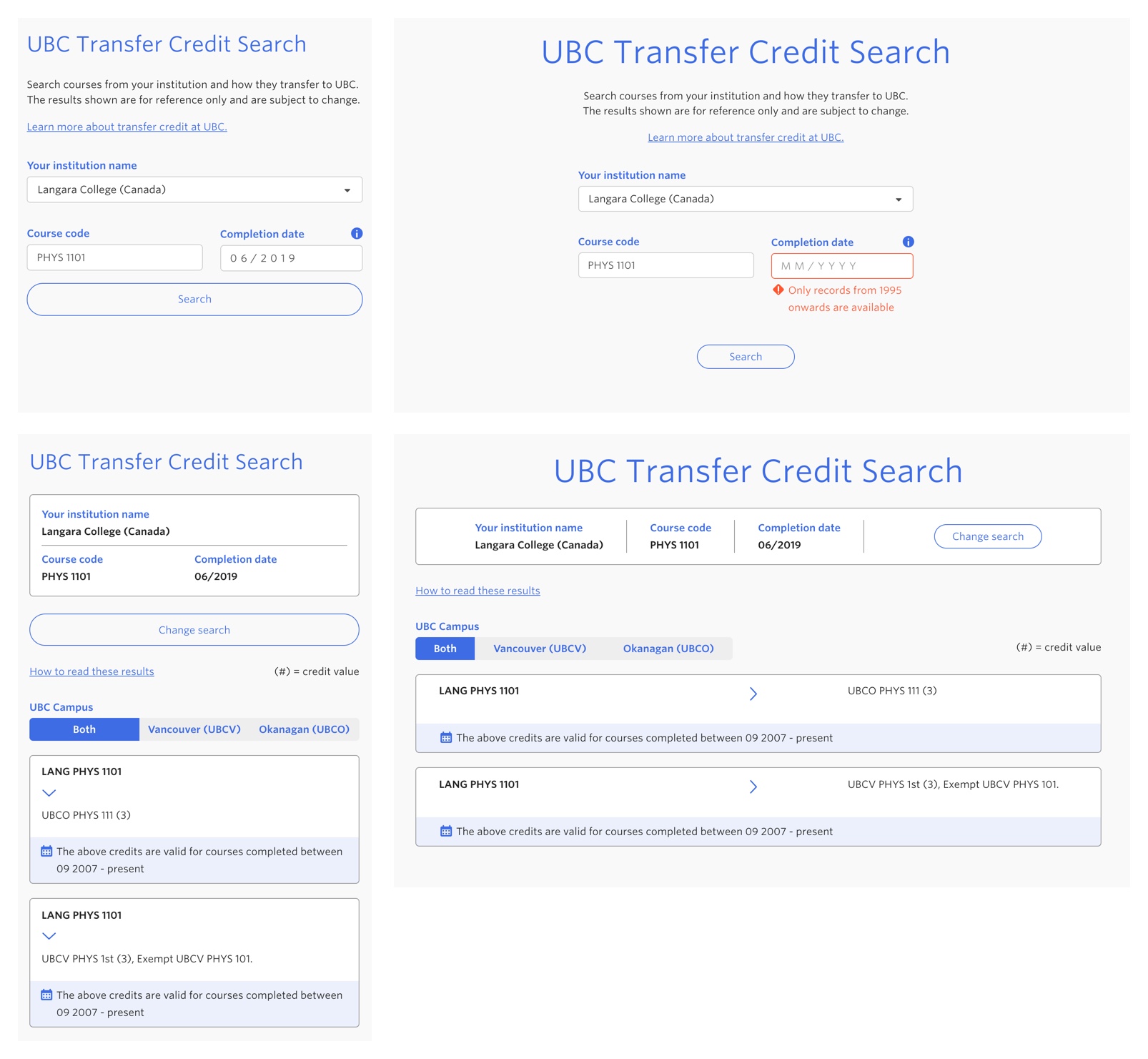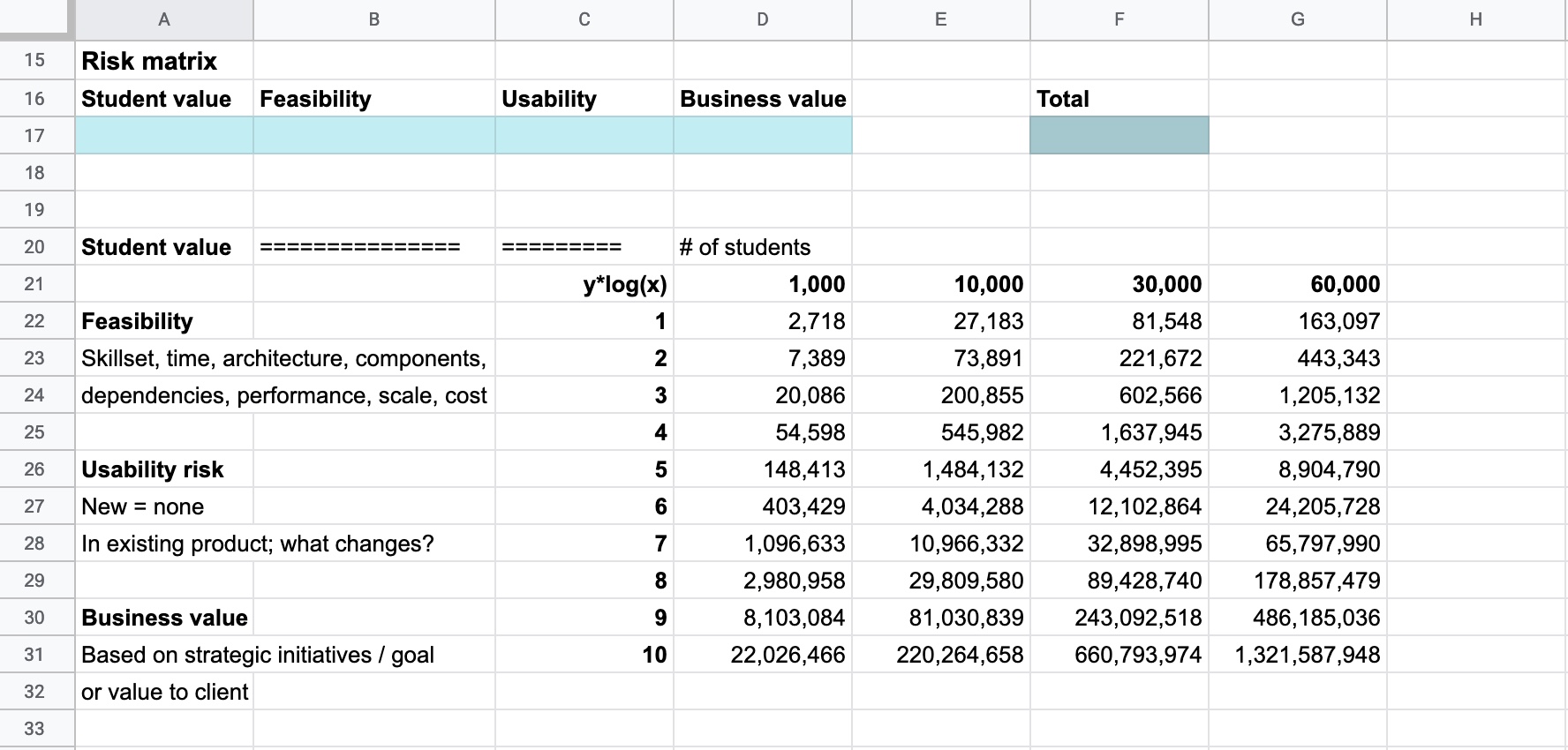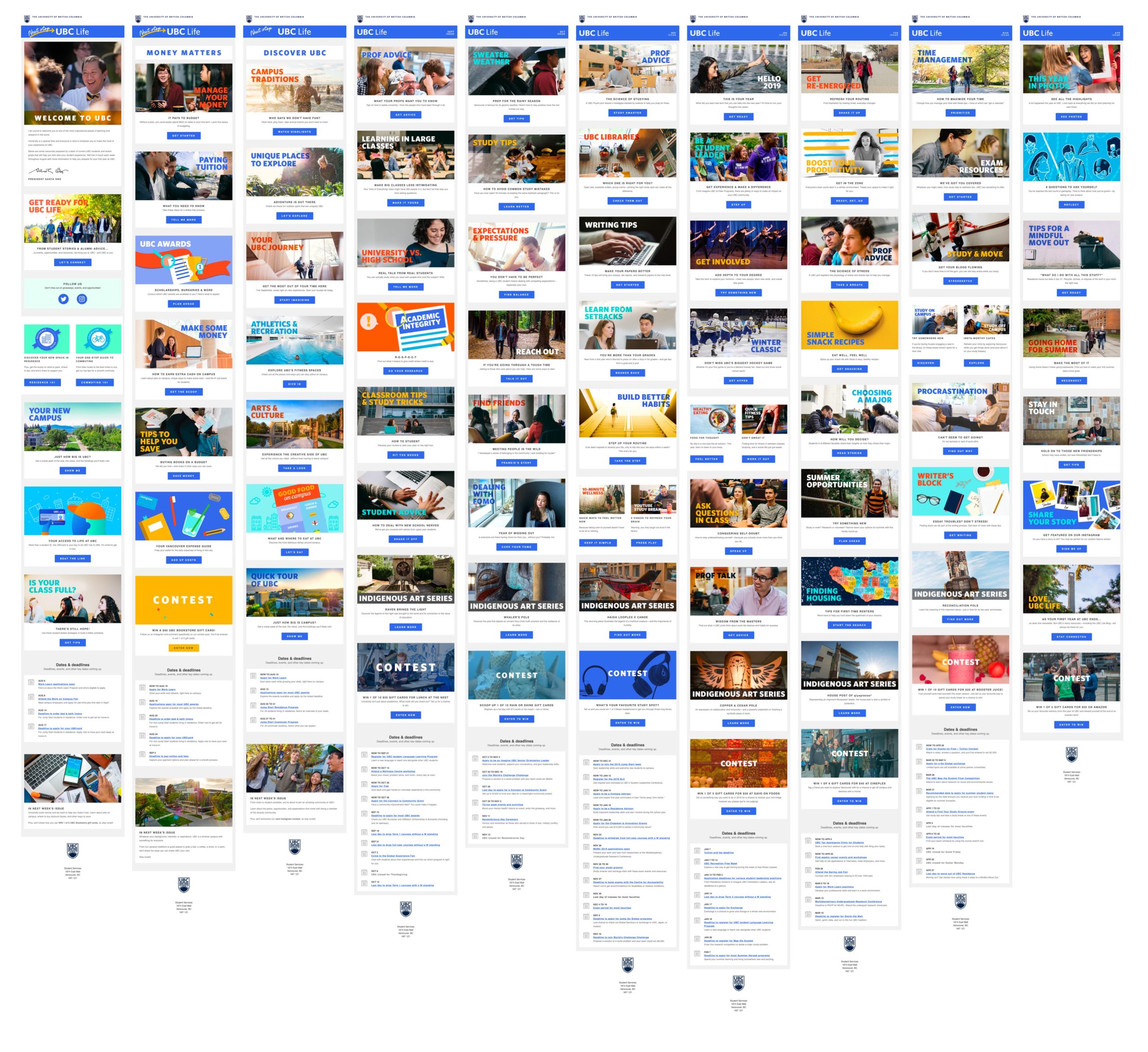What I did
I worked on many projects within cross-functional teams and with a range of stakeholders and subject matter experts from faculties, units and students. My role and responsibilities varied depending on the project and team, but always focused on user-centered principles, involving students and staff at every opportunity. My roles have included:
- Accessibility advisor
- User researcher
- UX/UI designer
- Front-end developer
- HTML Email designer/developer
Project 1
Transfer Credit Search Tool
I was part of the team which collaborated with Enrolment Services on an award-winning search tool which helps global students transferring into UBC understand how their existing credits transfer.
The problem
Prior to this tool, only students within British Columbia were able to see how their courses transferred to UBC. This tool enables a student from anywhere in Canada and internationally to do that. It had been a long term vision of Enrolment Services to provide such a tool, and our team collaborated with them and BCCAT to bring this to life.
My role
Discovery
As part of this stage, I led a discovery workshop with our team (design, development, content strategist) and Subject Matter Experts (SMEs) to understand business needs, student journeys, stakeholders and data structure. We held regular check-ins with our external stakeholders (BCCAT) to update them on progress, and to ask outstanding questions especially around data.
Define
As a team we produced journey maps to understand where this tool fits in the student transfer process. We were joined by a domestic and international transfer student to help us in this process. Through this we were also able to identify 2 new user types, Academic advisors and High-school counsellors. Stakeholder maps were also produced to understand where sign-off was needed and who should be informed of progress.

Develop
Next I held a design studio workshop with our team and SME’s and led them through design exercises to develop as many different ideas as possible. We did an 8up exercise followed by dot-voting and took those ideas for use in the deliver stage.
Together with the UX researcher (Ariel), we held in-person interviews with students to understand their mental models and language around transferring to UBC.
Deliver
I then produced a number of wireframe options that were presented to the team, and then tested with students.

These were then iterated on as Ariel and I ran both in-person and remote usability sessions with our 3 user types. After receiving feedback and refining I then produced a sketch prototype which was again tested in person. This was then passed to our design and development team to implement, together with UI additions to our design system such as a live search.
We held Design Critique workshops to give feedback and iron out any issues with the visual design and interactions.

Skills / Software
- Facilitating workshops (discovery, design studio)
- User interviews
- Usability testing
- UI design
- Prototyping
- HTML/CSS/JS
- Sketch
- Design / Development Liaison
Project 2
UBC Health
Since Santa Ono arrived as Vice-Chancellor in 2016, mental health services for students has been a priority at the University. The connection between in-person and online experiences, together with a distributed communications strategy, had been a source of frustration with students.
What we did
Discovery & Define
After running discovery workshops with stakeholders and students, I was able to gain a good understanding of the current service model, together with what documentation was needed at each stage of the process. Ariel (UX researcher) held interviews with students to obtain understanding, expectations and pain points of accessing mental health services at UBC. I was then able to define which parts of the entire system needed better connection to others and by what means.
Success would be determined by:
- Clearer communication to first year students
- Increased student knowledge of mental health options
- Reduce in-person appointments for less severe cases by providing online options
Develop & Deliver
I collaborated with the health SME’s/stakeholders to verify process and documentation needs as I redesigned how digital and in-person services could work together. This new model meant that students could self-serve when they needed to and had knowledge of the services available to them.
I recommended a technology stack, a communication strategy based on Intercom’s C.A.R.E. model of on-boarding and new user retention, together with further research needed to iterate on the design.

Note: before I was able to present the plan, an executive position changed and the project was put on hold.
Skills / Software
- Facilitating workshops
- User research
- Service design
Project 3
UX Strategy
My director at UBC asked me to produce a comprehensive UX Strategy to prioritize projects, identify resource needs and help decision-making.
Consulting with key members of our team, I built out the strategic initiatives and projects, along with a risk matrix which would help prioritize projects.


Project 4
UBC Life
The problem
Due to past decisions and a lack of direction, first year engagement and retention was at a low when UBC Life was launched.
What we did
The creative team of 8 was tasked with producing a brand and content that would be trusted by students to help them navigate their first year at UBC.
I worked with 2 visual designers and an illustrator on the design & layout, and our dev team on implementation, providing prototypes of new interactions.
Emphasis was based on creating social content, a blog and newsletter. I was UI design and dev lead on the blog & newsletter, and managed segmentation, broadcasting and reporting on the integrated data from all three pieces. I designed 2 layouts for blog posts which both decreased bounce rates and increased findability of useful content.


Success
Even though there is still work to be done, we have increased unique page views on the content by 32%, decreased bounce rates and retained engagement from students throughout the academic year. Awareness of, and trust in, the brand has increased, and events that we have promoted have seen increased attendance.
Skills / Software
- User research
- Wire-framing
- User-flows
- HTML Email design and build
- Sketch
